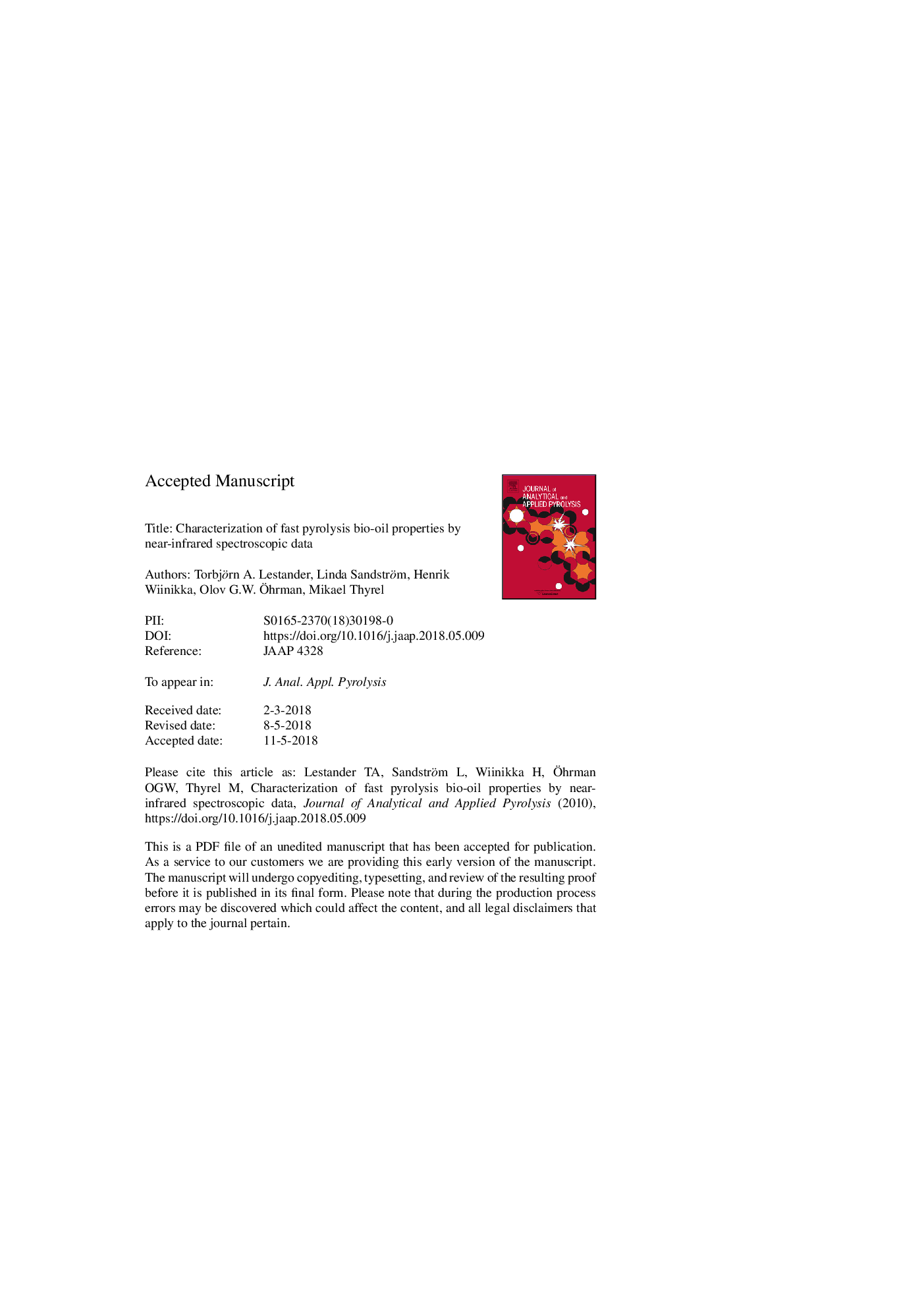| Article ID | Journal | Published Year | Pages | File Type |
|---|---|---|---|---|
| 7606224 | Journal of Analytical and Applied Pyrolysis | 2018 | 15 Pages |
Abstract
Pyrolysis transforms bulky and heterogeneous lignocellulosic biomass into more easily-handled oils that can be upgraded into bio-based transportation fuels. Existing systems for monitoring pyrolysis processes and characterizing their products rely on slow and time-consuming wet chemical analyses. On-line near-infrared (NIR) spectroscopy could potentially replace such analyses, providing real-time data and reducing costs. To test the usefulness of NIR methods in characterizing pyrolysis oils and processes, biomass from conifers, Salix, and reed canary grass was milled and pyrolyzed at 675, 750, and 775â¯Â°C. Two separate pyrolytic fractions (aerosol and condensed) were produced in each experiment, and NIR spectra were collected for each fraction. Multivariate modelling of the resulting data clearly showed that the samples' NIR spectra could be used to accurately predict important properties of the pyrolysis oils such as their energy values, main organic element (C, H and O) contents, and water content. The spectra also contained predictive information on the samples' origins, fraction, and temperature treatment, demonstrating the potential of on-line NIR techniques for monitoring pyrolytic production processes and characterizing important properties of pyrolytic oils from lignocellulosic biomass.
Related Topics
Physical Sciences and Engineering
Chemistry
Analytical Chemistry
Authors
Torbjörn A. Lestander, Linda Sandström, Henrik Wiinikka, Olov G.W. Ãhrman, Mikael Thyrel,
